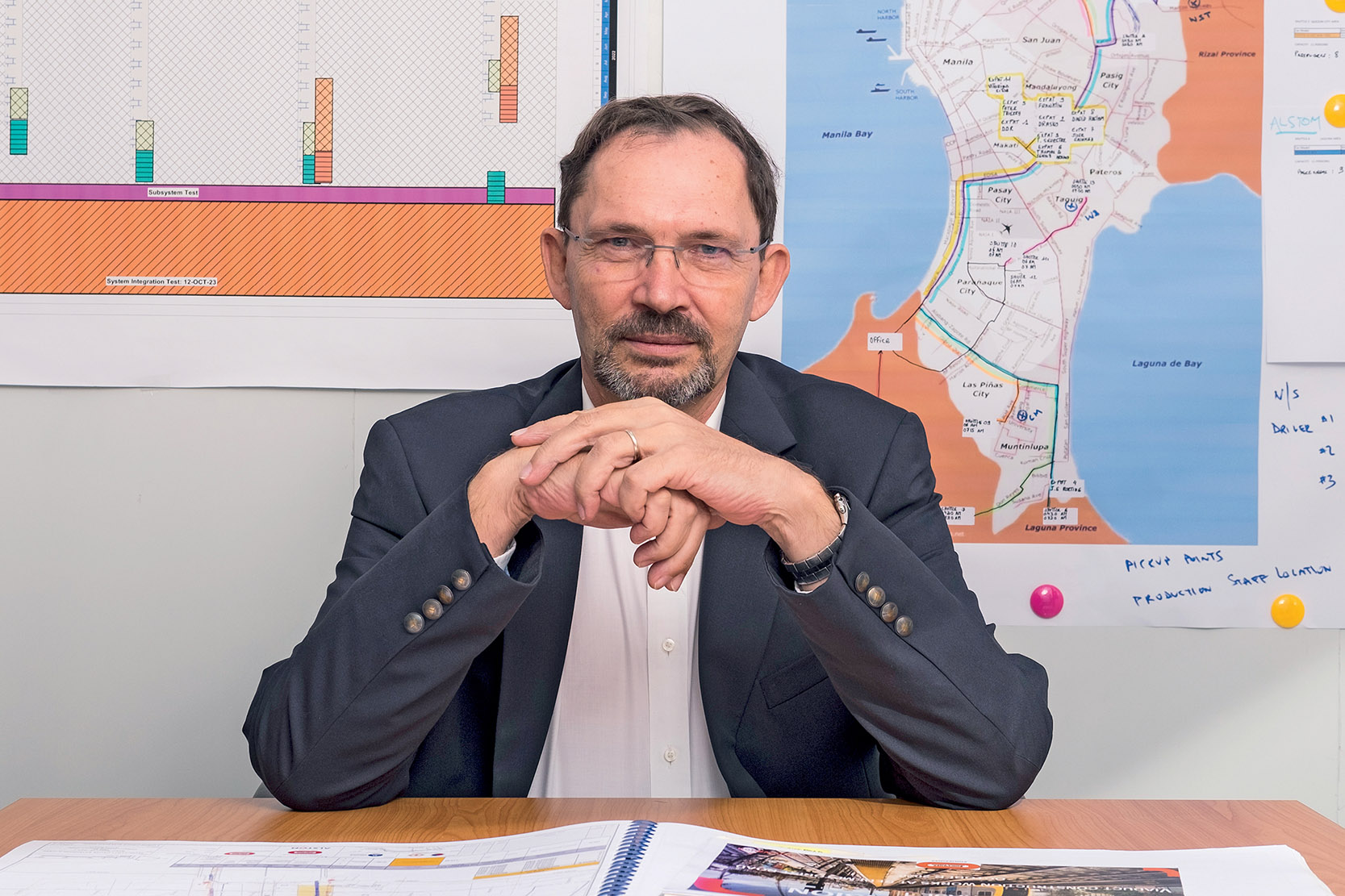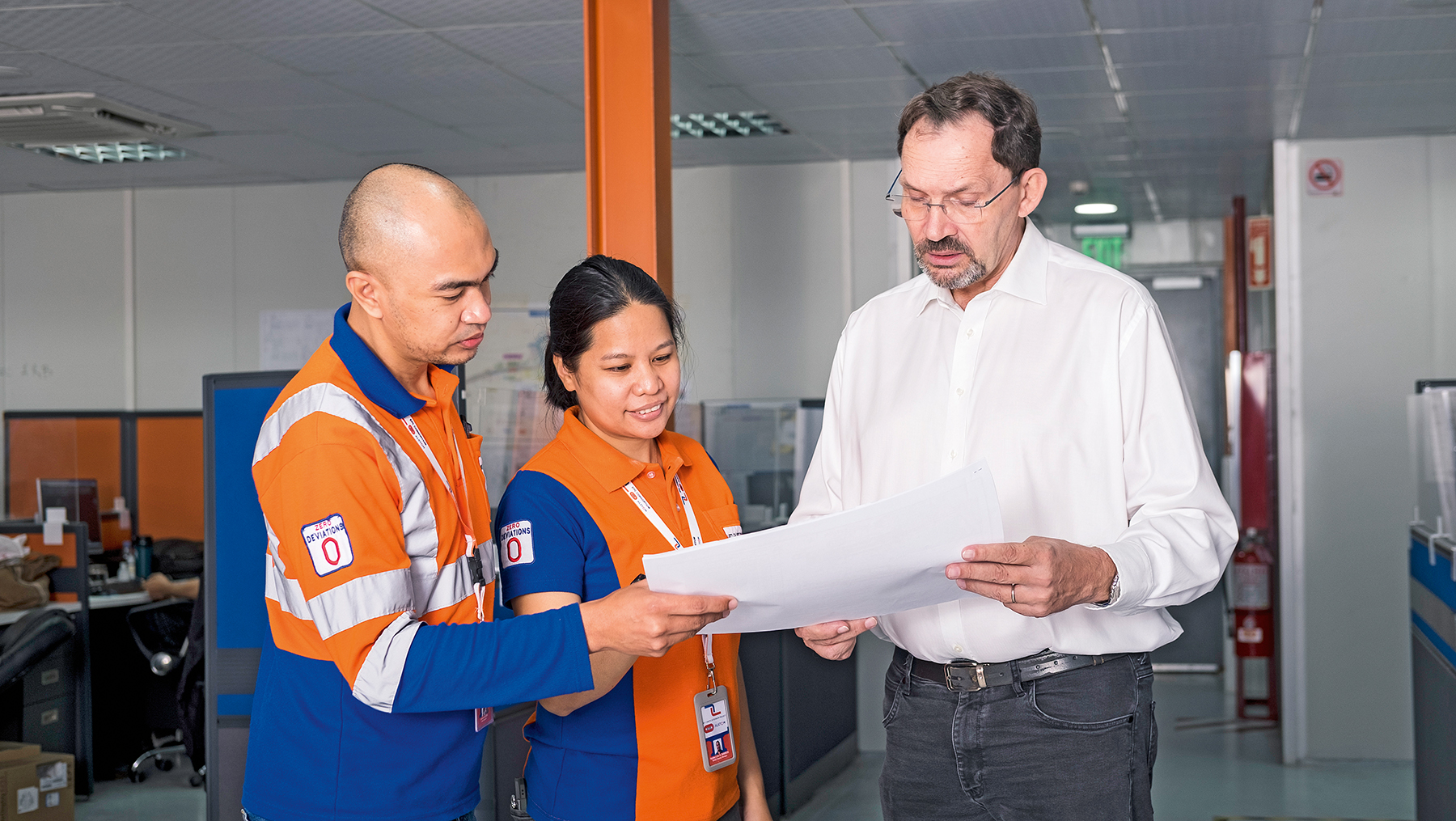Thinking Big: Dominique Droniou
As the President of Bouygues Travaux Publics Philippines, Dominique Droniou has the know-how to make a new wave of exciting infrastructure projects a reality.
With an infrastructure boom currently underway in the Philippines, Bouygues Travaux Publics Philippines has entered the market at exactly the right time, according to the company’s President Dominique Droniou. Infrastructure enhancements have long been necessary across the Philippines due to decades of underinvestment, but in Manila, the problem is particularly acute.

Poor infrastructure has created a serious traffic congestion problem for the capital’s 14 million inhabitants. In fact, a report by location technology firm TomTom highlighted Manila as the city with the second worst traffic congestion out of 416 surveyed around the world.
Another study by the Japan International Cooperation Agency revealed the country loses PHP3.5 billion (US$71.8 million) daily due to traffic congestion. An urban planner even estimated that Filipinos lose between nine and 15 years of their lives sitting in traffic. These are shocking statistics but, thankfully, change is afoot.
"Massive investment in infrastructure is underway, which is good news for us," Dominique tells The CEO Magazine. Substantial investments in infrastructure are indeed being made, with many projects already underway.
Massive investment in infrastructure is underway, which is good news for us.
In 2016, French-based Bouygues was appointed by the Light Rail Manila Corporation as the engineering, procurement and construction contractor for an extension of the Light Rail Transit Line 1 (LRT-1).
A global player operating in more than 80 countries on five continents, the company is renowned as an expert in large-scale projects involving tunnels, engineering structures, as well as road, port and rail infrastructures.
Dominique arrived in Manila in 2017 to head up Bouygues’ local operation and oversee the project. He has been with the company for an impressive 39 years, starting off as an engineer and steadily climbing the ladder to lead renowned projects such as the Go Between Bridge in Brisbane and the famous Hong Kong–Zhuhai–Macau Bridge.

His extensive industry experience has equipped him with the tools to tackle any locally specific challenges. The LRT-1 extension has proved an excellent way for Dominique to establish Bouygues in the local market, thanks to the high-profile nature of the project.
Since its 1984 launch, there has been a 20% increase in the number of passengers using the service, with it now carrying around 500,000 each day. By adding an additional eight stations to the existing 20 and 12 kilometres to its 20-kilometre length, by 2022 it will cover major cities Quezon, Caloocan, Manila, Pasay and Parañaque all the way to Bacoor in Cavite.
Once completed, the LRT-1 is expected to carry around 800,000 passengers per day and boost commercial development around the rail stations. Phase one of the project saw a total of 203 pi-girders (the chief horizontal support in a structure) installed using an above-ground launcher.
The project’s target is to install a pi-girder every one to two days until January 2022. The use of this special engineering technique is a first for the Philippines, enabling faster execution with minimal effect on ground-level traffic. It is the use of techniques like this that gives Bouygues the edge, according to Dominique.
"With more and more competition for the growing number of projects in the Philippines, it is important to stand out and offer something unique," he explains. Since his arrival, the opportunities are indeed looking even more promising – and competitive.
The Duterte administration unveiled its Build, Build, Build initiative in 2018, outlining 75 infrastructure projects to be implemented by 2022 with public spending on infrastructure projects targeted to reach PHP8–9 trillion (US$164.2–184.8 billion) over this period.
At the end of 2020, the target was increased in light of the COVID-19 pandemic and recent typhoons to sit at around 100 projects, with more under proposal. The aim is for the acceleration of infrastructure and the subsequent creation of jobs to help reduce poverty levels in the Philippines to 13–15% by 2022, down from 21.6% in 2015.
The initiative is also expected to increase the productive capacity of the economy and strengthen the investment climate, leading to sustained inclusive growth. Japan will also be a major investor in the country’s infrastructure.
In 2017, Japanese Prime Minister Shinzo Abe pledged JPY1 trillion (US$9.5 billion) in aid and investments to help the Philippines overhaul its infrastructure, as the two countries are committed to strengthening economic ties.
Having worked in Japan for three years, Dominique is confident that Bouygues’ strong relationships there will leave the company "well-placed" to benefit from future contracts.
"The company’s reputation as the one of the biggest in the world also puts us in a very good position," he says. Meanwhile, he is proud of the impact the company has already made, providing local workers with well-paid jobs, excellent training and attractive career prospects. In his long work history, Dominique considers this legacy to be his "greatest achievement".
He is, after all, living proof of the career longevity Bouygues offers. "We are actually putting together a leadership program at the moment and we hope to put 15 people through it in the coming year," he reveals.
Those who take part in the program will be able to travel, when possible, within the global business, experience different areas and learn new skills. Although the COVID-19 pandemic presented some unforeseen hurdles, the LRT-1 project remains on track despite the lockdown and travel restrictions, thanks to Dominique’s careful management of the crisis.
He identified communication as essential, both to keep the business running and to safeguard employee wellbeing, and then ensured all staff members were provided with a laptop and an adequate 4G connection – no small feat with many living in remote locations.
Now, he eagerly awaits the easing of travel restrictions so that the company can start bringing in more skilled workers to help it achieve its goals and share its expertise with the local workforce. While the next year promises to be an eventful one for both the Philippines and Bouygues, Dominique is convinced the future looks bright.
Proudly supported by: